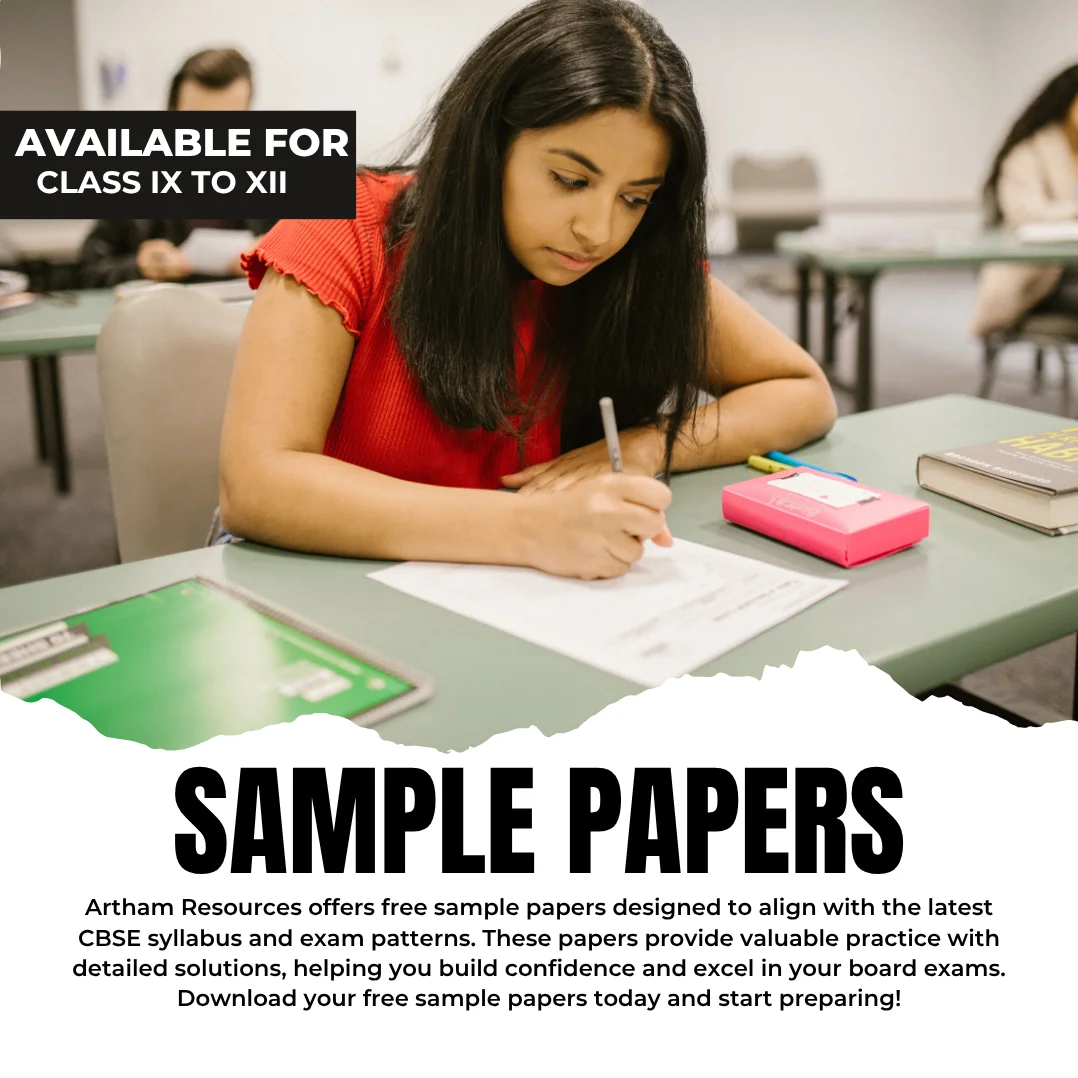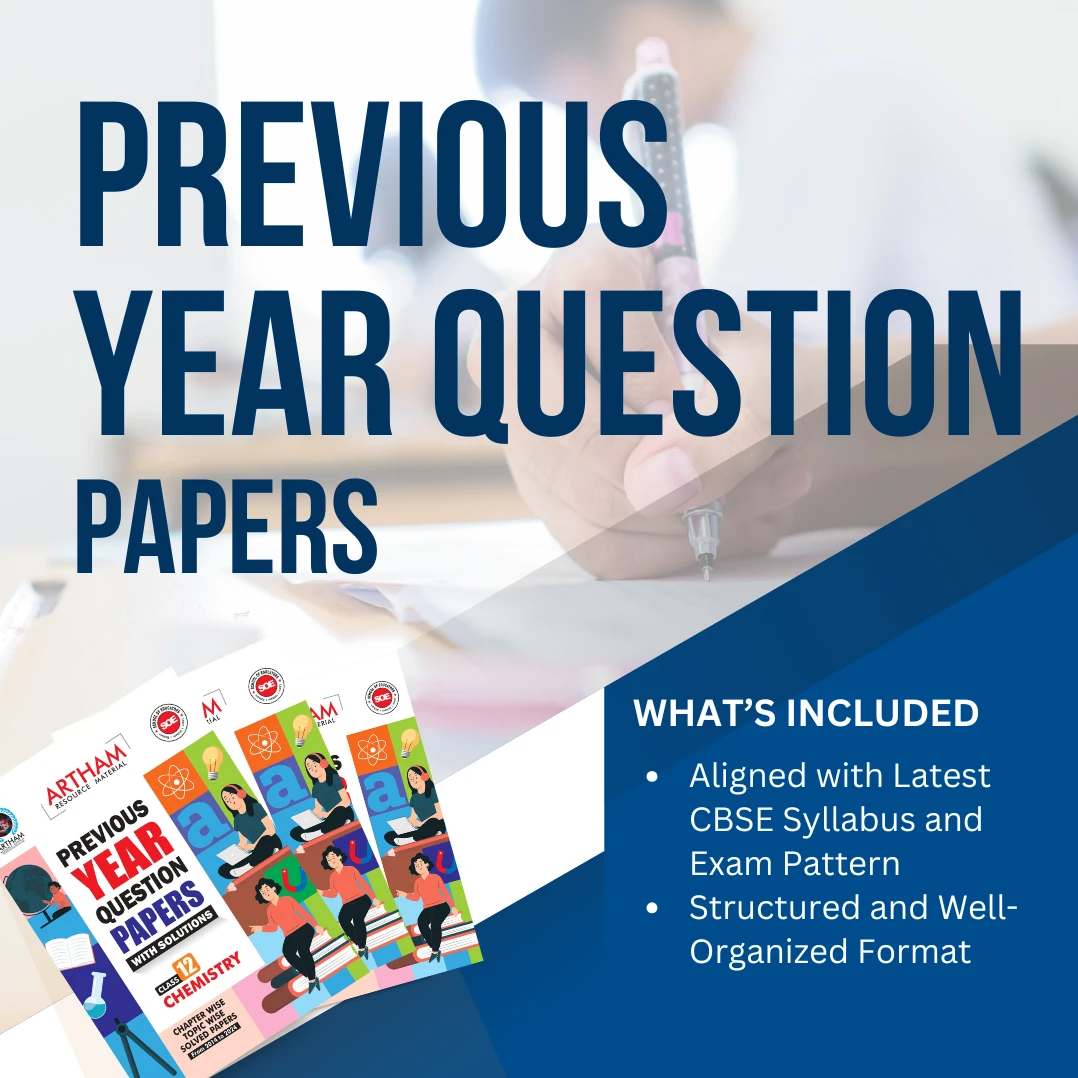Shop Left Sidebar
- CBSE
- Chapter Wise Topic Wise Notes
- Class 10
- Class 9
- Competency-Based Question Bank
- Competitive Exams & Aptitude Tests
- Comprehensive Viva Voice
- Courses
- CUET
- Daily Practice Paper (DPP)
- Diagnostic Assessment
- eBooks
- For New School
- Foundation and Olympiad Study Material
- Gift for Students
- Gift for Teachers
- Half Yearly Sample Question Paper with Solution
- Holiday Homework
- Illustrative Charts
- Journal
- Kindergarten
- Lesson Plan
- Life Skills
- Line by Line Questions
- Mind Maps
- Must Buy
- NCERT Exemplar Solutions
- NCERT Solutions
- Notes
- POWERPOINT PRESENTATIONS
- Pre Launch Stage
- Premium WhatsApp Group
- Previous Year Question Papers
- Previous Year Question Papers with Solutions
- Print version of SOP
- Sample Paper
- Sample Paper with Solutions
- Self Development
- Split -up Syllabus
- Sports and Physical Education
- Standard Operating Manuals
- Study Materials for Students
- Teachers Manual with Lesson Plans
Best seller
-
-100%
₹ 50.00Original price was: ₹ 50.00.₹ 0.00Current price is: ₹ 0.00. -
-100%
₹ 50.00Original price was: ₹ 50.00.₹ 0.00Current price is: ₹ 0.00. -
-100%
₹ 50.00Original price was: ₹ 50.00.₹ 0.00Current price is: ₹ 0.00. -
-100%
₹ 299.00Original price was: ₹ 299.00.₹ 0.00Current price is: ₹ 0.00.
- CBSE
- Chapter Wise Topic Wise Notes
- Class 10
- Class 9
- Competency-Based Question Bank
- Competitive Exams & Aptitude Tests
- Comprehensive Viva Voice
- Courses
- CUET
- Daily Practice Paper (DPP)
- Diagnostic Assessment
- eBooks
- For New School
- Foundation and Olympiad Study Material
- Gift for Students
- Gift for Teachers
- Half Yearly Sample Question Paper with Solution
- Holiday Homework
- Illustrative Charts
- Journal
- Kindergarten
- Lesson Plan
- Life Skills
- Line by Line Questions
- Mind Maps
- Must Buy
- NCERT Exemplar Solutions
- NCERT Solutions
- Notes
- POWERPOINT PRESENTATIONS
- Pre Launch Stage
- Premium WhatsApp Group
- Previous Year Question Papers
- Previous Year Question Papers with Solutions
- Print version of SOP
- Sample Paper
- Sample Paper with Solutions
- Self Development
- Split -up Syllabus
- Sports and Physical Education
- Standard Operating Manuals
- Study Materials for Students
- Teachers Manual with Lesson Plans
Showing 1–16 of 55 results
-
-62%
Lesson Plan Class 8 Mathematics Chapter 1 Rational Numbers
₹ 50.00Original price was: ₹ 50.00.₹ 19.00Current price is: ₹ 19.00.This lesson plan focuses on introducing students to rational numbers in Class 8 Mathematics. Rational numbers are explored through their definition, properties, and operations including addition, subtraction, multiplication, and division. Emphasis is placed on understanding the concept of rational numbers as fractions, terminating and non-terminating decimals, and their placement on the number line.
-
-62%
Lesson Plan Class 8 Mathematics Chapter 2 Linear Equations in One Variable
₹ 50.00Original price was: ₹ 50.00.₹ 19.00Current price is: ₹ 19.00.This lesson plan for Class 8 Mathematics focuses on Chapter 2: Linear Equations in One Variable. Students will delve into understanding the fundamental concepts of linear equations, including solving equations with one variable, identifying linear equations from real-world scenarios, and applying algebraic methods to solve problems. The plan integrates interactive activities to engage students actively in learning, such as problem-solving tasks, group discussions, and practical applications of linear equations in various contexts.
-
-62%
Lesson Plan Class 8 Mathematics Chapter 3 Understanding Quadrilaterals
₹ 50.00Original price was: ₹ 50.00.₹ 19.00Current price is: ₹ 19.00.In this lesson plan for Class 8 Mathematics, Chapter 3 on Understanding Quadrilaterals, students delve into the properties and classifications of quadrilaterals. The lesson begins with an introduction to basic geometric concepts, followed by interactive activities to identify and categorize different types of quadrilaterals based on their sides and angles.
-
-62%
Lesson Plan Class 8 Mathematics Chapter 4 Data Handling
₹ 50.00Original price was: ₹ 50.00.₹ 19.00Current price is: ₹ 19.00.This comprehensive lesson plan for Class 8 Mathematics focuses on Chapter 4: Data Handling. Students will delve into the fundamentals of organizing, interpreting, and analyzing data through engaging activities and exercises. The lesson plan emphasizes practical applications of data handling concepts, including collection methods, representation techniques such as bar graphs and pie charts, and measures of central tendency like mean, median, and mode.
-
-62%
Lesson Plan Class 8 Mathematics Chapter 5 Squares and Square Roots
₹ 50.00Original price was: ₹ 50.00.₹ 19.00Current price is: ₹ 19.00.This lesson plan for Class 8 Mathematics focuses on Chapter 5: Squares and Square Roots. Students will explore the fundamental concepts of squares and square roots through engaging activities and exercises. The plan includes interactive discussions to deepen understanding of how square numbers are formed and their properties. Practical examples and real-life applications will be used to illustrate the relevance of squares and square roots in everyday contexts.
-
-62%
Lesson Plan Class 8 Mathematics Chapter 6 Cubes and Cube Roots
₹ 50.00Original price was: ₹ 50.00.₹ 19.00Current price is: ₹ 19.00.The lesson plan for Class 8 Mathematics Chapter 6, “Cubes and Cube Roots,” aims to provide students with a comprehensive understanding of cubes and cube roots. This chapter introduces the concept of cubing a number, the properties of cubes, and how to find the cube roots of perfect and imperfect cubes. The lesson includes various teaching strategies such as interactive activities, problem-solving sessions, and real-life applications to enhance student engagement and understanding.
-
-62%
Lesson Plan Class 8 Mathematics Chapter 7 Comparing Quantities
₹ 50.00Original price was: ₹ 50.00.₹ 19.00Current price is: ₹ 19.00.The lesson plan for Class 8 Mathematics Chapter 7, “Comparing Quantities,” is designed to help students understand the concept of comparing quantities through various methods such as ratios, percentages, and proportions. The plan includes interactive activities and real-life examples to make learning engaging and relatable. Students will learn how to calculate percentages, convert percentages to fractions and decimals, and solve problems involving profit, loss, discount, simple interest, and compound interest.
-
-62%
Lesson Plan Class 8 Mathematics Chapter 8 Algebraic Expressions and Identities
₹ 50.00Original price was: ₹ 50.00.₹ 19.00Current price is: ₹ 19.00.This lesson plan for Class 8 Mathematics Chapter 8, “Algebraic Expressions and Identities,” is designed to introduce students to the fundamental concepts of algebraic expressions and their identities. The lesson begins with an overview of algebraic terms, coefficients, and constants, followed by the formulation and simplification of algebraic expressions. Students will learn to identify and apply standard algebraic identities such as the distributive property, the square of a binomial, and the product of a sum and difference.
-
-62%
Lesson Plan Class 8 Mathematics Chapter 9 Mensuration
₹ 50.00Original price was: ₹ 50.00.₹ 19.00Current price is: ₹ 19.00.This lesson plan for Class 8 Mathematics Chapter 9 – Mensuration is designed to provide students with a comprehensive understanding of the concepts of area and volume. The lesson begins with a review of basic geometrical shapes and progresses to the calculation of areas and perimeters of different polygons, including rectangles, squares, and triangles. Students will also learn to find the surface area and volume of 3D shapes such as cubes, cuboids, and cylinders.
-
-62%
Lesson Plan Class 8 Mathematics Chapter 10 Exponents and Powers
₹ 50.00Original price was: ₹ 50.00.₹ 19.00Current price is: ₹ 19.00.This lesson plan for Class 8 Mathematics focuses on the fundamental concepts of exponents and powers. Students will delve into understanding the rules of exponents, such as multiplication, division, and power of a power. The plan includes interactive activities to reinforce learning, including solving exponent problems in real-world contexts. Emphasis is placed on practical applications, encouraging students to calculate large numbers efficiently using exponent rules.
-
-62%
Lesson Plan Class 8 Mathematics Chapter 11 Direct and Inverse Proportions
₹ 50.00Original price was: ₹ 50.00.₹ 19.00Current price is: ₹ 19.00.This lesson plan for Class 8 Mathematics focuses on Chapter 11, Direct and Inverse Proportions. Students will delve into understanding the fundamental concepts of direct proportionality, where two quantities change in the same direction, and inverse proportionality, where one quantity increases as the other decreases. The plan includes engaging activities to illustrate these concepts through real-world examples, encouraging students to apply mathematical reasoning to everyday scenarios.
-
-62%
Lesson Plan Class 8 Mathematics Chapter 12 Factorisation
₹ 50.00Original price was: ₹ 50.00.₹ 19.00Current price is: ₹ 19.00.This lesson plan for Class 8 Mathematics focuses on Chapter 12: Factorisation, aiming to enhance students’ understanding of breaking down algebraic expressions into simpler forms. The lesson begins with a recap of basic algebraic identities and moves on to explore various methods of factorisation, including common factors, grouping, and the difference of squares. Emphasis is placed on practical applications of factorisation in solving equations and simplifying expressions.
-
-62%
Lesson Plan Class 8 Mathematics Chapter 13 Introduction to Graphs
₹ 50.00Original price was: ₹ 50.00.₹ 19.00Current price is: ₹ 19.00.This lesson plan for Class 8 Mathematics focuses on Chapter 13: Introduction to Graphs. Students will delve into fundamental concepts of graphs, learning to interpret and create graphical representations of data. The lesson begins with an exploration of basic graph components such as axes, labels, and scales. Activities include plotting points, drawing simple graphs, and understanding the relationship between variables through graphical representation.
-
-62%
Lesson Plan Class 8 Science Chapter 1 Crop Production And Management
₹ 50.00Original price was: ₹ 50.00.₹ 19.00Current price is: ₹ 19.00.This lesson plan for Class 8 Science focuses on the fundamentals of crop production and management. Students will explore the process of cultivating crops, understanding soil preparation, sowing methods, irrigation techniques, and harvesting. The lesson aims to develop an understanding of agricultural practices, emphasizing sustainable methods and their importance in ensuring food security. Practical activities such as field visits or simulations will enhance students’ comprehension of crop cycles, pest management, and the role of nutrients.
-
-62%
Lesson Plan Class 8 Science Chapter 2 Microorganisms : Friend And Foe
₹ 50.00Original price was: ₹ 50.00.₹ 19.00Current price is: ₹ 19.00.In this engaging lesson plan for Class 8 Science, Chapter 2, “Microorganisms: Friend And Foe,” students delve into the fascinating world of microorganisms. The lesson begins with an exploration of the characteristics and types of microorganisms, emphasizing their roles as both beneficial allies and potential adversaries in various environments. Students learn about the beneficial uses of microorganisms in areas such as food production, medicine, and environmental conservation.
-
-62%
Lesson Plan Class 8 Science Chapter 3 Coal And Petroleum
₹ 50.00Original price was: ₹ 50.00.₹ 19.00Current price is: ₹ 19.00.This lesson plan for Class 8 Science Chapter 3 on Coal and Petroleum aims to engage students in understanding the formation, extraction, and uses of fossil fuels. The plan includes interactive activities such as virtual tours of coal mines and oil refineries, hands-on experiments demonstrating fossil fuel combustion, and discussions on environmental impacts and sustainable alternatives. Emphasis is placed on developing critical thinking through debates on energy policies and the global implications of fossil fuel consumption.
Teaching is one of the hardest and most important jobs in the world. We provide the support that teachers need to transform their subjects into terms that their students will understand.
- Nageen International
- B-162, 4th Floor, DDA Shed, Okhla Industrial Area Phase 1 New Delhi-110020 (India)
- WhatsApp us at +91-95208-11111
- Email: info@educatorsresource.in
- (Monday to Saturday) WhatsApp 24*7
2025 Educator Resources. All Rights Reserved.




